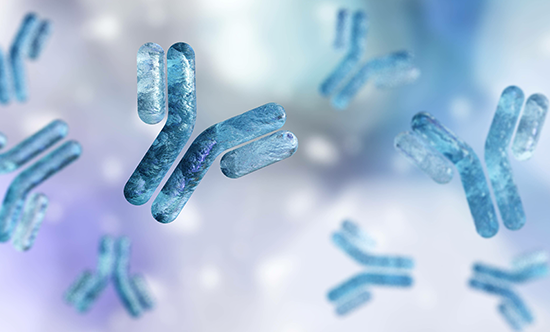
PPMD recently announced the formation of the Pediatric Gene Therapy and Medical Ethics (PGTME) Working Group to address the challenges involved in gene therapy. As part of their recent educational series, the PGTME held a webinar on the topic of immunogenicity in gene therapy (the interaction between the body’s immune system and gene therapy viral vectors).
This webinar provided an excellent overview of neutralizing antibodies (the antibodies created when the immune system has seen this virus and developed resistance) and the challenges they create in delivery of gene therapy.
The talk given by Dr. Jim Wilson, with responses from Dr. Tim Cripe, covers an introduction to viruses, the immune response they trigger, how antibodies interact with the virus, measuring antibodies to AAV (the vector that carries the micro-dystrophin) and how all of this impacts gene therapy using AAV.
Below are some key takeaways from the lecture by Drs. Wilson and Cripe.
Watch: Ethical Challenges of Immunogenicity & Toxicity in Pediatric Gene Therapy Research
Talk by Dr. James Wilson, Director of UPenn Perelman School of Medicine’s Gene Therapy program, with a response by Dr. Timothy Cripe, Chief of Pediatric Hematology and Oncology and Blood and Marrow Transplantation at Nationwide Children’s Hospital
How Antibodies Interact with Gene Therapy
With the promise of gene therapy in the Duchenne pipeline, one of the biggest concerns among patients and families is around eligibility to receive the therapy. Current gene therapy strategies aim to deliver a micro-dystrophin transgene to cells in the body by using a viral vector known as adeno-associated virus (AAV). As many families are now familiar with, one of the key components of eligibility is whether a patient has neutralizing antibodies to AAV.
Typically, we associate antibodies with being beneficial for people to help them fight off infection; antibodies can bind to a virus to prevent it from infecting a cell and thereby thwart its ability to deliver its genetic material. In the case of gene therapy, we want the virus to deliver its genetic payload to cells. Patients who have antibodies to AAV may be excluded from receiving these investigational products, because the antibodies would prevent the virus from delivering beneficial transgenes to the cells.
Measuring Antibodies (“antibody titer”)
Testing methodologies for assessing a patient’s antibody titer vary. The antibody titer is the measure of how many antibodies a patient has for a particular virus. A patient can be tested for the amount of antibodies in the blood that prevent AAV from infecting a cell, i.e. neutralizing antibodies. Alternatively, a patient can be tested for the presence of antibodies that can bind to AAV, though the ability of an antibody to bind a virus does not mean it will prevent the virus from infecting a cell.
When you hear the term high titer, that means that a patient has a large amount of antibodies to a virus, so even when their blood (which contains the antibodies) has been diluted many times there are still enough antibodies present to bind a virus.
Animal data suggests that that high antibody titers tend to be maintained over a number of years. Animals that were exposed to AAV and developed antibodies continued to produce antibodies against AAV for up to 10 years.
There are several different serotypes (variations) of adeno-associated virus (AAV). Data also showed that in animals with high antibody titers to one serotype of AAV (e.g. AAV8), the antibodies they produced also interacted with other serotypes of AAV (e.g. AAV9). We call this ability for an antibody for one serotype of virus to neutralize different serotypes of a virus cross-reactivity.
Strategies for Overcoming Immune Challenges to Neutralizing Antibodies
There are different ways investigators are thinking about overcoming these immune challenges to neutralizing antibodies: utilizing plasmapheresis to temporarily clear antibodies from the blood, delivering enzymes to destroy antibodies prior to treatment, or even broad immunosuppression to prevent the immune system from responding to AAV as possible pathways to enabling delivery of AAV to those with high antibody titers.
There also may be non-AAV methods of delivering transgenes that don’t trigger the same immune response, though those strategies are still in early development. These various strategies, such as immune suppression, are not without their own risks that would need to be evaluated for overall risk/benefit for an individual.
Impact on Clinical Trial Participation
If an individual is interested in participating in a clinical trial, an independent antibody titer test will not guarantee or disqualify you from participation in a particular trial or in all gene therapy trials. Patients need to go through the screening process for a particular sponsor, so they can be screened for the presence of neutralizing antibodies by the methodologies that sponsor has deemed appropriate.
Additionally, the threshold for what is too high a level of antibodies to AAV is not standardized, again requiring screening with a specific sponsor for their specific gene therapy product.
Future Research in PPMD’s Gene Therapy Initiative
Since the launch of our Gene Therapy Initiative in 2017, PPMD has funded over $3 million in a variety of gene therapy and related approaches to several institutions, as well as research into the effects of gene therapy on the heart and potential immune responses gene therapy may provoke. Most recently, PPMD and Duchenne UK launched a Joint Grant Call to seek out research proposals aimed at uncovering new ways to minimize the immunological issues of gene therapy in the treatment of Duchenne. An announcement of the award recipient is forthcoming.
PPMD will continue to evaluate opportunities to further the promise of gene therapy for Duchenne. As with all of our investments, we believe it is essential to accelerate options for all individuals diagnosed and invest in work across approaches, targets, and methodologies, in order to develop options for all.



 by: Parent Project Muscular Dystrophy
by: Parent Project Muscular Dystrophy

